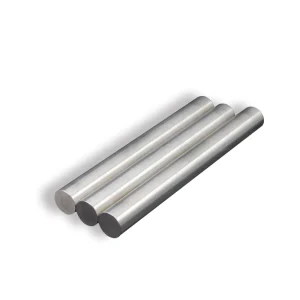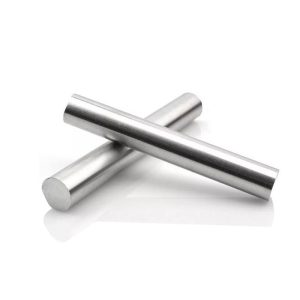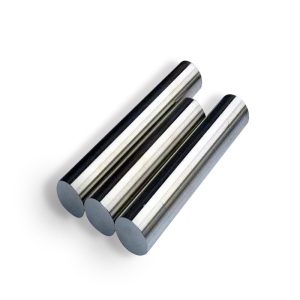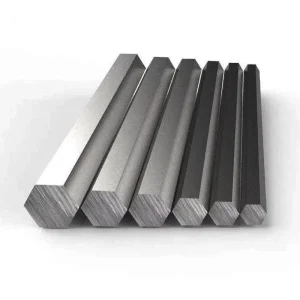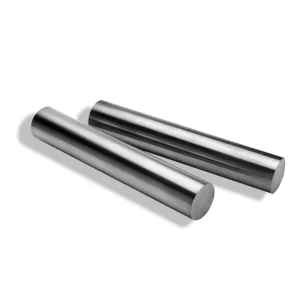When working with stainless steel sheets, understanding the concept of gauge is absolutely fundamental. It’s not just a number; it directly dictates the material’s strength, weight, rigidity, formability, and, crucially, its cost. Let me tell you directly: while the lower the gauge number, the thicker the sheet, there isn’t one universal gauge standard for all metals. For stainless steel, you’ll primarily encounter the U.S. Standard Gauge (also known as the Manufacturers’ Standard Gauge or MSG), which is distinct from other systems like Birmingham Gauge (BWG) or Imperial Standard Wire Gauge (SWG) used for wire. Getting this right is paramount to specifying the correct material for your project, ensuring both performance and budget alignment.
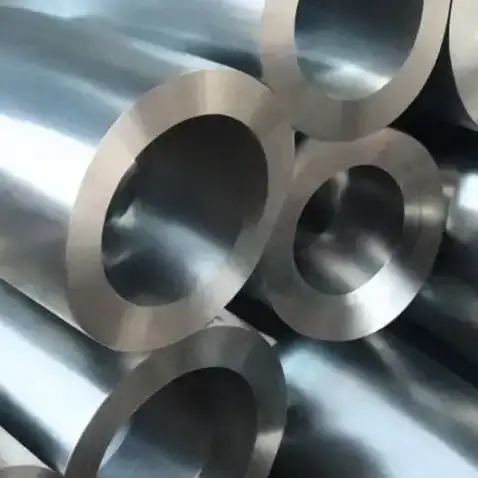
What is Gauge and Why Does It Matter for Stainless Steel Sheets?
Gauge is a system used to specify the thickness of sheet metal. It’s an inverse scale, meaning a lower gauge number indicates a thicker sheet, and a higher gauge number means a thinner sheet. This system originated as a way to standardize thicknesses before precision measurement tools were commonplace, effectively indicating how many times a material had been drawn or rolled.
For stainless steel, the gauge directly impacts its performance and suitability for various applications. A thicker gauge offers greater rigidity, strength, and resistance to denting or deformation, making it ideal for structural components, heavy-duty work surfaces, or applications requiring significant load-bearing capacity. Conversely, a thinner gauge is lighter, more flexible, and easier to cut or form, often preferred for decorative panels, enclosures, or lighter-duty applications where weight is a concern.
From my years in metal fabrication, I’ve seen countless projects go awry because of a misunderstanding of gauge. Specifying an overly thick gauge means unnecessary material cost and fabrication difficulty, while an insufficient thickness can lead to premature failure, sagging, or inability to meet design requirements. That’s why a precise understanding of the stainless steel sheet gauge chart is essential for engineers, fabricators, and purchasers alike.
The U.S. Standard Gauge for Stainless Steel
The U.S. Standard Gauge (MSG) is the most prevalent system for stainless steel sheet thickness in North America and widely adopted in many parts of the world. It’s important to note that this gauge system is specific to certain ferrous metals, including stainless steel, hot-rolled steel, and cold-rolled steel. It differs from gauge systems used for non-ferrous metals like aluminum or copper, which have their own distinct gauge charts.
Here’s a typical breakdown of the U.S. Standard Gauge for stainless steel, converting gauge numbers to their corresponding decimal inches and millimeters. When I refer to “standard gauge” in the context of stainless steel, this is the chart I’m referencing.
Stainless Steel Sheet Gauge Chart (U.S. Standard Gauge)
| Gauge (Ga) | Decimal Inches (in) | Millimeters (mm) | Common Applications |
| 3 | 0.2500 | 6.350 | Heavy-duty industrial equipment, tanks, structural components |
| 4 | 0.2344 | 5.954 | Heavy-duty workbenches, large tanks, high-impact areas |
| 5 | 0.2188 | 5.558 | Commercial kitchen counters, industrial machinery housing |
| 6 | 0.2031 | 5.159 | Heavy-duty exhaust hoods, structural panels |
| 7 | 0.1875 | 4.763 | Industrial tabletops, robust splashbacks |
| 8 | 0.1719 | 4.366 | Commercial sinks, large oven liners |
| 9 | 0.1563 | 3.969 | Durable enclosures, machinery parts |
| 10 | 0.1406 | 3.571 | Restaurant equipment, food processing machinery |
| 11 | 0.1250 | 3.175 | General purpose fabrication, counter tops, wall panels |
| 12 | 0.1094 | 2.779 | Architectural trim, medium-duty equipment |
| 13 | 0.0938 | 2.383 | Lighter gauge workbenches, equipment covers |
| 14 | 0.0781 | 1.984 | Commercial kitchen backsplashes, appliance panels |
| 15 | 0.0703 | 1.786 | Light-duty enclosures, decorative panels |
| 16 | 0.0625 | 1.588 | Common for backsplashes, food service, light-duty fabrication |
| 17 | 0.0563 | 1.430 | Architectural finishes, custom enclosures |
| 18 | 0.0500 | 1.270 | Very common for residential appliances, light commercial |
| 19 | 0.0438 | 1.113 | Decorative trim, small panels |
| 20 | 0.0375 | 0.953 | Common for appliance skins, thin panels, interior decor |
| 21 | 0.0344 | 0.874 | Lighter gauge decorative pieces |
| 22 | 0.0313 | 0.795 | Thin decorative applications, light covers |
| 23 | 0.0281 | 0.714 | Very thin aesthetic applications |
| 24 | 0.0250 | 0.635 | Extremely thin, usually for aesthetic or very light applications |
| 25 | 0.0219 | 0.556 | Rarely used for structural integrity |
| 26 | 0.0188 | 0.478 | Extremely thin, often for very specific, non-structural aesthetic uses |
| 27 | 0.0172 | 0.437 | Typically the thinnest available, very specialized |
| 28 | 0.0156 | 0.396 | Less common, for extremely light duty or aesthetic components |
Note: Thicknesses listed are nominal. Actual thicknesses may vary slightly within accepted industry tolerances.
Key Factors Beyond Gauge: Understanding Stainless Steel Sheet Specifications
While gauge is crucial, it’s only one piece of the puzzle. When specifying stainless steel sheets, several other factors equally influence performance, appearance, and cost. I always consider these in conjunction with the gauge:
1. Stainless Steel Grade: The Alloying Elements Define Performance
Stainless steel isn’t just one material; it’s a family of alloys. The “grade” refers to its specific chemical composition, which dictates its properties like corrosion resistance, strength, heat resistance, and weldability.
- Austenitic Grades (e.g., 304, 316): These are the most common.
- 304 Stainless Steel: The “workhorse” grade, offering excellent corrosion resistance in most environments, good formability, and weldability. It’s widely used in kitchen equipment, architectural panels, and food processing.
- 316 Stainless Steel: Often called “marine grade,” it contains molybdenum, which significantly enhances its resistance to pitting corrosion from chlorides (like saltwater) and stronger acids. It’s more expensive than 304.
- Ferritic Grades (e.g., 430): Magnetic, lower cost than austenitic, but with reduced corrosion resistance and less formability. Used in less demanding applications like appliance trim or automotive components.
- Martensitic Grades (e.g., 410): Can be hardened by heat treatment, offering high strength and hardness but with lower corrosion resistance. Used for cutlery or turbine blades.
- Duplex Grades (e.g., 2205): Combine properties of austenitic and ferritic stainless steels, offering higher strength and superior corrosion resistance, especially in harsh environments, but at a premium price.
2. Surface Finish: Aesthetics and Functionality
The surface finish dramatically impacts the appearance, cleanability, and corrosion resistance of the stainless steel sheet. It’s usually designated by a number or descriptive term:
- No. 2B: A smooth, reflective cold-rolled annealed and pickled finish. This is a very common general-purpose finish, offering good corrosion resistance and often serving as a base for further polishing.
- No. 4 (Brushed/Satin Finish): Characterized by fine, parallel polishing lines. This is extremely popular for architectural applications, kitchen equipment, and appliances due to its attractive, non-directional appearance and ease of maintenance.
- No. 8 (Mirror Finish): Highly reflective, achieved by extensive polishing. Used for decorative purposes, reflective panels, and cleanrooms.
- BA (Bright Annealed): A very smooth, bright, reflective finish produced by bright annealing in a controlled atmosphere furnace. Often used for food contact surfaces and decorative applications.
- Mill Finish (Hot Rolled, Annealed, Pickled – HRAP): A dull, non-uniform finish typical of thicker plates. Less aesthetically pleasing but functional for structural or less visible applications.
3. Dimensions: Sheet Size and Quantity
Stainless steel sheets come in standard widths (e.g., 48 inches, 60 inches) and lengths (e.g., 96 inches, 120 inches, 144 inches). Custom sizes are possible but will likely incur additional costs and longer lead times. Buying standard sizes and in bulk quantities almost always results in better pricing due to economies of scale.
4. Manufacturing Process: Cold Rolled vs. Hot Rolled
- Cold Rolled (CR): Typically refers to thinner gauges (generally below 3/16 inch or 4.76 mm). Produces a smoother surface finish, tighter tolerances, and improved mechanical properties (higher strength). Most stainless steel sheets in common gauges are cold-rolled.
- Hot Rolled (HR): Used for thicker gauges (plates, generally above 3/16 inch or 4.76 mm). Produces a coarser surface finish and less precise tolerances but is more cost-effective for heavier sections.
Global Market Price Influences and Trends for Stainless Steel Sheets
The price of stainless steel sheets, regardless of gauge, is heavily influenced by a complex interplay of global economic forces, raw material costs, and regional supply-demand dynamics. Understanding these can help you anticipate price movements.
- Raw Material Costs: Nickel, chromium, molybdenum, and iron ore are the primary alloying elements. Fluctuations in their global commodity prices (driven by mining output, political stability, and industrial demand) directly translate to stainless steel costs. Nickel, in particular, is a significant price driver for austenitic grades like 304 and 316.
- Energy Prices: Stainless steel production is energy-intensive. Costs of electricity, natural gas, and coal used in smelting and rolling mills directly impact manufacturing expenses.
- Supply and Demand: Global economic growth, construction activity, automotive production, and consumer appliance sales all contribute to the demand for stainless steel. Over- or under-supply in the market can cause significant price swings.
- Trade Tariffs and Duties: Imposed tariffs or anti-dumping duties by various countries can significantly increase the cost of imported stainless steel, influencing local market prices.
- Currency Exchange Rates: For international purchases or for countries that heavily rely on imports (like many in Southeast Asia), currency exchange rates against the USD can impact landed costs.
- Logistics and Freight: The cost of shipping heavy metal sheets across continents or even within countries (fuel, port charges, trucking) adds to the final price.
Illustrative Global Price Comparison (as of Mid-2025)
Providing precise, real-time prices for every gauge and grade globally is impractical due to constant market fluctuations. However, I can offer a generalized price comparison for 304 Stainless Steel Sheet, No. 4 finish, 4′ x 8′ (1219mm x 2438mm) size, across common gauges, reflecting general market trends. These are estimated per sheet prices and can vary substantially based on volume discounts, supplier relationships, and exact market conditions.
| Gauge (Ga) | Decimal Inches (in) | Millimeters (mm) | Estimated Price Range (USD per 4’x8′ sheet) – North America | Estimated Price Range (USD per 4’x8′ sheet) – Europe | Estimated Price Range (USD per 4’x8′ sheet) – Asia (ex-China) |
| 10 | 0.1406 | 3.571 | $750 – $1,100 | €700 – €1,000 ($760 – $1,085) | $650 – $950 |
| 11 | 0.1250 | 3.175 | $650 – $950 | €600 – €900 ($650 – $975) | $550 – $800 |
| 12 | 0.1094 | 2.779 | $550 – $850 | €500 – €800 ($540 – $865) | $450 – $700 |
| 14 | 0.0781 | 1.984 | $400 – $650 | €370 – €600 ($400 – $650) | $350 – $550 |
| 16 | 0.0625 | 1.588 | $300 – $500 | €280 – €460 ($305 – $500) | $250 – $400 |
| 18 | 0.0500 | 1.270 | $250 – $400 | €230 – €370 ($250 – $400) | $200 – $320 |
| 20 | 0.0375 | 0.953 | $180 – $300 | €170 – €270 ($185 – $295) | $150 – $250 |
| 22 | 0.0313 | 0.795 | $150 – $250 | €140 – €230 ($150 – $250) | $120 – $200 |
Disclaimer: These figures are indicative estimates only. Actual prices will vary significantly based on supplier, exact location, order quantity, current market conditions, specific grade (316 will be significantly higher), surface finish, and any applicable taxes or duties.
Understanding Tolerances and Specifications
When ordering stainless steel sheets, it’s not just about the nominal gauge thickness. Manufacturers adhere to specific tolerances, which define the permissible variation from the nominal dimension. These tolerances are critical for precise fabrication and ensuring fitment.
For stainless steel sheets, tolerances are typically governed by standards like ASTM A480/A480M, which covers general requirements for flat-rolled stainless and heat-resisting steel plate, sheet, and strip. This standard specifies permissible variations in thickness, width, length, flatness, and camber. For instance, a 16-gauge stainless steel sheet won’t be precisely 0.0625 inches thick across its entire surface; it will have a specific allowance (e.g., +/- 0.003 inches) within which the thickness must fall.
My advice: Always review the manufacturer’s or supplier’s stated tolerances. For highly critical applications, you might need to specify tighter-than-standard tolerances, which could impact cost. Understanding these variations prevents headaches down the line during fabrication or assembly.
Choosing the Right Gauge for Your Application: Practical Considerations
Selecting the appropriate gauge is a critical design decision. Here’s how I approach it, considering both technical and practical aspects:
- Structural Requirements: If the stainless steel sheet needs to bear significant weight, resist impact, or maintain rigidity over a span, a thicker gauge (e.g., 10-14 gauge) is necessary. For purely aesthetic cladding or light-duty panels, thinner gauges (e.g., 18-22 gauge) suffice.
- Corrosion Resistance: While the grade (e.g., 304 vs. 316) is paramount for corrosion resistance, a thicker gauge can sometimes provide a buffer against localized corrosion, as there’s more material to corrode before structural integrity is compromised.
- Formability and Fabrication: Thinner gauges are easier to cut, bend, and form without specialized heavy machinery, reducing fabrication costs. Thicker gauges require more powerful equipment and can be more challenging to work with.
- Weight and Handling: Thinner sheets are lighter, making them easier to transport, lift, and install, which can reduce labor costs. For large projects, cumulative weight can be a significant design factor.
- Aesthetics and Finish: The gauge can influence how a certain finish appears or performs. For instance, a mirror finish (No. 8) on a very thin gauge might show more undulations or imperfections if the underlying structure isn’t perfectly flat.
- Cost: This is often the ultimate determinant. Thicker gauges mean more material, translating directly to higher prices per square foot or per sheet. Balancing performance needs with budget constraints is key.
My recommendation is to always err on the side of slightly thicker if unsure about structural demands, but to avoid excessive thickness to control costs. Consulting with a materials engineer or experienced fabricator can help optimize this choice.
Care and Maintenance of Stainless Steel Sheets
Even with the correct gauge and grade, proper care and maintenance ensure the longevity and appearance of your stainless steel sheets. Stainless steel is renowned for its low maintenance, but it’s not entirely maintenance-free.
- Regular Cleaning: For most finishes (like No. 4), simply wiping with a soft cloth and warm water is sufficient. For more stubborn marks, a mild detergent and water, followed by rinsing and drying, works well. Always wipe in the direction of the grain for brushed finishes to prevent streaks.
- Avoiding Harsh Chemicals: Do not use abrasive cleaners, steel wool, or cleaners containing chlorides (like bleach) on stainless steel, as these can damage the passive layer and lead to rust or pitting.
- Protection in Fabrication: During cutting, grinding, or welding, protect the surface from carbon steel contamination. Carbon steel particles embedded in the stainless steel surface can rust and cause “tea staining.”
- Surface Scratch Repair: Minor scratches on brushed finishes can often be blended using specialized stainless steel abrasive pads, always moving in the direction of the existing grain.
Following these simple practices will help maintain the integrity and aesthetic appeal of your stainless steel sheets, regardless of their gauge.
Frequently Asked Questions (FAQs)
1. Is there a universal gauge standard for all metals?
No, there isn’t one universal gauge standard. Different metals (like stainless steel, aluminum, copper) use different gauge systems. Even within steel, there can be slight variations (e.g., U.S. Standard Gauge for sheet vs. other systems for wire). Always confirm the specific gauge standard being used when ordering.
2. What’s the most common gauge of stainless steel sheet?
For general architectural applications, kitchen equipment, and appliances, 16-gauge (0.0625 inches / 1.588 mm) and 18-gauge (0.0500 inches / 1.270 mm) stainless steel sheets are among the most common. They offer a good balance of durability, formability, and cost.
3. Can stainless steel gauge be measured with a caliper?
Yes, absolutely. While gauge numbers are a convenient way to refer to thickness, the actual decimal inch or millimeter thickness can be precisely measured with a caliper or micrometer. This is often done for quality control or to verify material specifications.
4. Does the gauge affect the corrosion resistance of stainless steel?
The primary factor for corrosion resistance is the grade (e.g., 304, 316) of the stainless steel, not its gauge. However, a thicker gauge might offer slightly more material to resist penetration if localized corrosion (like pitting) occurs, potentially delaying through-wall failure. But fundamentally, a thinner sheet of 316 stainless steel will be more corrosion-resistant than a thicker sheet of 304 in corrosive environments like those involving chlorides.
5. What are the common sizes for stainless steel sheets?
Standard stainless steel sheets are commonly available in dimensions such as 4 feet x 8 feet (48″ x 96″ or 1219mm x 2438mm), 4 feet x 10 feet (48″ x 120″ or 1219mm x 3048mm), and 5 feet x 10 feet (60″ x 120″ or 1524mm x 3048mm). Longer lengths like 12 feet (3658mm) are also available. Always check with your supplier for available stock sizes.
In conclusion, the stainless steel sheet gauge chart is an indispensable tool for anyone working with this versatile metal. Understanding how gauge relates to decimal thickness, along with the influence of stainless steel grade, surface finish, and market dynamics, empowers you to make informed decisions that optimize both the performance and cost of your projects. By diligently applying this knowledge, you ensure your stainless steel applications are both effective and economically sound.
Official References
- ASTM A480/A480M – Standard Specification for General Requirements for Flat-Rolled Stainless and Heat-Resisting Steel Plate, Sheet, and Strip
- NEMA 250 – Enclosures for Electrical Equipment (1000 Volts Maximum) – Provides some gauge information, often aligns with industry standards for sheet metal thickness.
- ISO 9445-1:2018 – Continuously cold-rolled stainless steel narrow strip, wide strip, sheet, and plate — Tolerances on dimensions and form — Part 1: Cold-rolled strip and cut lengths
- Custom Stainless Steel Pipe Supplier






